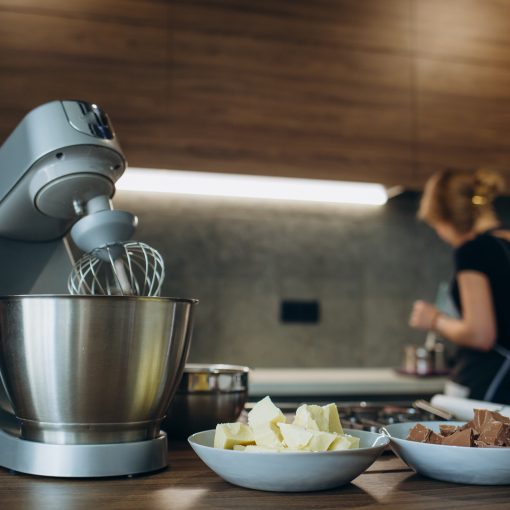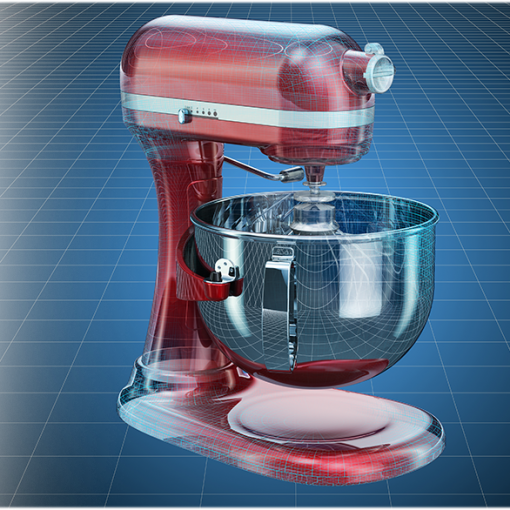Mixers are built to handle heavy workloads, but sometimes their parts shift in ways we do not expect. One issue that stands out is when the shaft slips out of alignment. This small change can throw off the performance of the entire machine. In our work at MIXER REPAIR SERVICES CALGARY, we have seen how frustrating it can be when something so simple leads to poor mixing results. Let’s look at why this happens and what can be done about it.
Understanding How the Shaft Works
Every mixer relies on a central shaft to transfer power from the motor to the beaters or attachments. This piece has to stay aligned to rotate evenly and deliver steady movement. If the shaft drifts off its path, the beaters may wobble, fail to engage properly, or stop moving altogether. Our team has found that even the smallest misalignment can change the rhythm of the entire device. Over time, this leads to added strain on the gears and motor.
Common Reasons Shafts Move Out of Place
Several conditions can cause the shaft to lose its position. Sometimes it comes from normal wear as the metal parts grind against one another. Other times, the problem starts when attachments are forced in without being lined up correctly. Heavy use with stiff doughs or thick batters also creates stress that pushes the shaft out of place. We often notice that when mixers are dropped or handled roughly, the internal frame bends just enough to shift the shaft slightly.
Signs of Misalignment You Should Watch For
A shaft that has moved out of place rarely goes unnoticed. We listen for scraping sounds when the beaters spin, or for uneven mixing where one beater turns freely and the other drags. In some cases, the attachment may pop out on its own during use. Shaking or extra vibration is another common sign. MIXER REPAIR SERVICES CALGARY has worked with customers who first thought they had motor issues, when in fact the shaft had slipped. Knowing these signals early saves time and prevents further damage.
How Internal Gears Play a Role
Inside every mixer, a set of gears manages the rotation speed. These gears must stay aligned with the shaft. If one tooth wears down or cracks, the shaft starts to drift. As it shifts, it can wear the gear teeth even faster, creating a cycle that only gets worse. We have taken apart machines where just one damaged gear was enough to throw the shaft off its path completely. Understanding this link between gears and alignment helps us focus on the root of the problem instead of just the surface signs.
Maintenance Steps That Prevent Issues
Regular care keeps the shaft steady and reduces the risk of misalignment. We advise cleaning attachments carefully and avoiding force when inserting them. Lightly greasing the gears when recommended by the manufacturer also makes a big difference. Storing the mixer in a safe spot where it will not tip over helps prevent damage to the frame. In our experience, small habits like these extend the life of the shaft and keep the machine running smoothly.
Repair Options When the Shaft Slips
When the shaft moves out of line, the repair approach depends on the cause. If gears are worn, they need to be replaced. If the frame is bent, straightening or replacing that section is often required. Sometimes we simply reset the shaft back into its track and secure it with new fasteners. We use specific tools to ensure it is aligned with the motor and attachments. For anyone unsure about the process, it is safer to rely on professionals who offer mixer repair services Calgary because improper fixes can make the problem worse.
Why Professional Repairs Are Often Necessary
It may seem easy to open the case and shift the shaft back in place, but there are hidden challenges. Inside the mixer, springs and clips keep the shaft locked. Removing them without the right tools risks breaking the pieces. Our team has seen mixers where well-meaning owners attempted repairs, only to damage the gears beyond recovery. Professional service ensures the alignment is set correctly and that other parts are not harmed in the process.
Extra Insight Many People Overlook
One factor that often gets missed is the condition of the counter surface where the mixer is used. We have found that using a mixer on uneven or unstable surfaces creates vibration that slowly shifts the shaft. Something as simple as placing the appliance on a level, sturdy counter can make a difference. This small adjustment prevents ongoing stress and supports longer use without misalignment.
Cost and Time Considerations
Repairs vary in both time and expense depending on the damage. A quick realignment may take under an hour, while gear or frame replacement requires more work. Our team always checks whether the cost of repair makes sense compared to replacement. In most cases, repairing is worthwhile because it restores the mixer to reliable working condition without the cost of buying new.
When It’s Best to Seek Help Immediately
We recommend getting support as soon as you notice signs of slipping alignment. Waiting often leads to added damage that spreads from the shaft to the motor or gears. By acting early, we can prevent bigger issues and reduce overall costs. If you suspect your mixer is showing symptoms, the best step is to contact us for repairs so we can assess the situation quickly.
FAQ
Why does my mixer suddenly start making loud grinding noises?
This usually happens when the shaft or gears inside have shifted out of place. The grinding is the sound of misaligned parts rubbing together.
Can I still use my mixer if the shaft is only slightly misaligned?
It is not recommended. Even slight misalignment puts strain on other components and may lead to more costly repairs later.
How often should gears inside a mixer be checked?
We suggest an inspection every couple of years if the appliance is used frequently. This ensures wear is caught before it causes alignment issues.
What is the most common cause of a shaft slipping out of place?
Heavy use with tough mixtures combined with normal wear on gears is the leading cause. Rough handling can also play a major role.
Is shaft alignment repair expensive?
Costs depend on the damage. Minor adjustments are usually affordable, while major gear or frame replacement costs more but still often saves money compared to replacing the unit.




